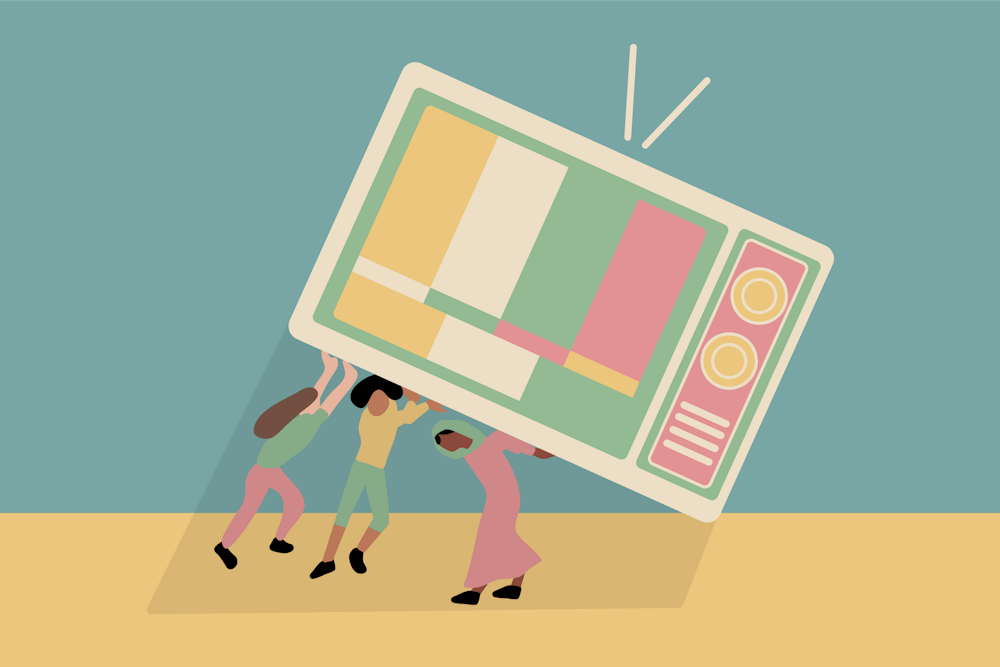Violence against women is portrayed inappropriately in media time and time again. The portrayal of this violence along with how those on social media react to it, should be a concern.
When faced with unwarranted violence, many women are told to "just say no" and described as objects or are deemed less deserving of basic human protections.
A recent example of this is the assault case involving NBA player Kevin Porter Jr. and girlfriend Kysre Gondrezick. Porter, 23, entered a not-guilty plea to felony assault and strangulation charges in the case, according to ESPN.
Hundreds of users took to Twitter in defense of Gondrezick, but in an inappropriate way.
“How you assault this smh,” one user said, as if Gondrezick is an object. "Facts we only hit ugly b****es," another commenter said in response, as if it would be okay to hit a woman if she wasn't considered attractive.
These comments illustrate two significant problems within society: Women are often seen as objects and not human beings, and many believe that women aren’t worthy of protection if they aren’t considered beautiful.
When women are objectified, they are seen as inferior. Because of this, violence against them is not taken seriously or is only taken seriously when women are deemed desirable.
“When Megan Thee Stallion got shot and then the media coverage, the press coverage and also social media discourse about what happened … was less about, ‘How did that happen? Who did that to you? What should the repercussions be?’ and more so about how she ended up in that position or focusing on her body,” Wesley Stevens, an assistant professor in USC's School of Journalism and Mass Communications, said.
Stevens said objectification of women can be harmful, because it not only invalidates their experiences but dehumanizes them as well.
"I study this concept called hypervisibility, which is essentially the idea that, for Black women in particular and also other marginalized groups as well, that when they find themselves in a publicly visible or accessible space, that for Black women in particular, they're subjected to much harsher criticism, much more scrutiny, that they're more likely to get backlash or get pushback on what they might say, or what they might share," Stevens said.
Instead of acknowledging a violent experience, many users on social media platforms comment on a woman's body, making it clear that they have no intention to actively advocate.
Rather than criticizing a woman's physical appearance and concentrating on unrelated elements, we should support and fight for her.
Gondrezick’s abuse is an example of how some women aren’t seen as worthy of protection unless they embody certain beauty standards and social status.
In contrast, Ro Bashe, a TikTok user, used the app to share her recent abuse, where she was hit by a brick when she refused to give a man her phone number. In reaction, thousands of accounts falsely claimed that she was the violent one and accused her of lying or even blamed her. After showing the police report and hospital records as requested, Bashe was still met with criticism and dismissed.
"We still don't believe her," one user said in response to Bashe's story.
The difference in how people responded to Gondrezick's and Bashe's stories shows how people treat women differently depending on whether or not they adhere to beauty standards. Due to their appearances, one survivor was objectified and believed while the other was disregarded and not believed.
Both situations are terrible and should be taken seriously. Many users refuse to look beyond someone's skin tone or physical appearance, preventing them from standing up for women and speaking out against the injustices committed against them.
The phrase "just say no" is another problem with how violence against women is talked about. The phrase is often used to victim-blame or shame women into thinking that their assault was their fault. This shifts accountability from the perpetrator to the survivor.
“Men can't take no for an answer, it's as simple as that. So it's like the 'just say no' thing … when that doesn't work, what else are you supposed to do? What can you do?” Ren Pusher, a third-year journalism student, said.
This phrase heavily impacts the reaction to violence against women in media. Instead of focusing on what women should or could have done when they are harmed, the accountability of those who commit these crimes needs to be stressed.
“In social psychology we talk about the ‘just world theory’ which is the idea that if something bad happens to someone, they must have done something wrong. It’s a bias we all tend to have, to protect ourselves from feeling vulnerable,” Suzanne Swan, a professor in USC's departments of psychology and women's and gender studies, said.
Through advocacy and acknowledgment, people can help those who face this violence and abuse.
“Be a good listener. Make yourself a safe person someone can talk to. Don’t victim blame and don’t try to control them by telling them what to do,” Swan said.

Advocates can start by giving or extending a helping hand to those in need. USC's Sexual Assault and Violence Intervention & Prevention office is a great resource. Students can fill out an incident report form or call them at 803-777-8248. Students can also call the Sisterhood Against Sexual Assault, an organization that offers support to sexual assault survivors, at 803-777-8248.
Sharing these stories and offering support will aid in spreading awareness.
“Abusers can manipulate victims into thinking there is no way out and nobody can help them, but this isn’t true,” Swan said.
Speaking out against violence and tactics that objectify and dehumanize women is crucial if we want to advance the cause of reducing this recurring brutality.

